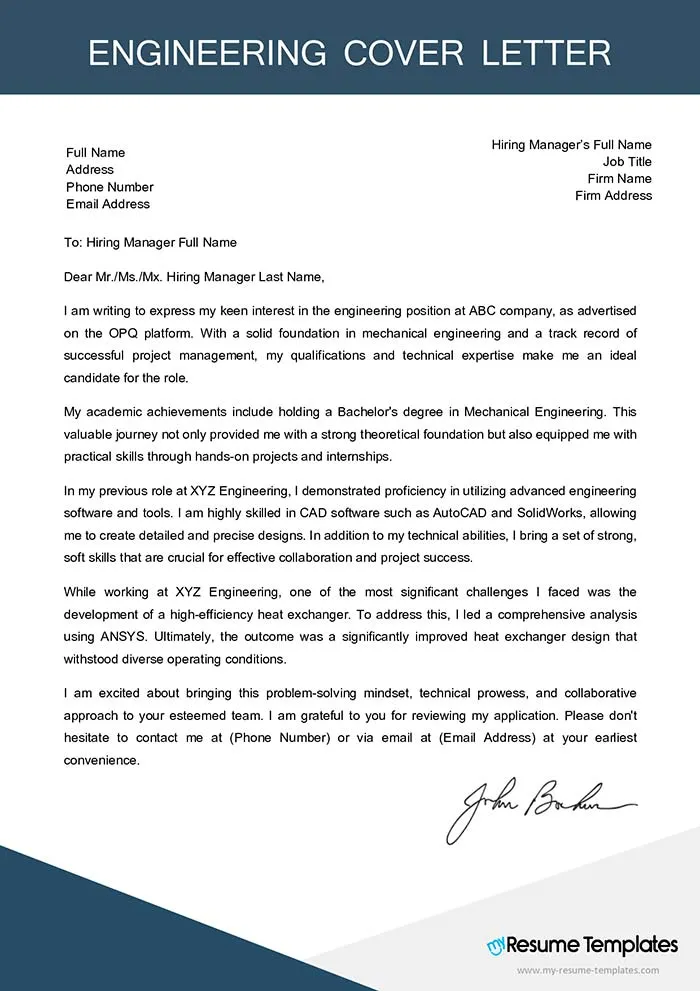Understanding the Engineering Cover Letter
An engineering cover letter serves as your introduction to a potential employer, offering a glimpse into your qualifications, skills, and personality. Unlike a resume, which provides a factual overview, the cover letter allows you to narrate your story, demonstrating why you are the ideal candidate for a specific role. This document is your opportunity to make a strong first impression and persuade the hiring manager to invite you for an interview. A well-crafted cover letter complements your resume, highlighting relevant experiences and expressing your enthusiasm for the opportunity.
Key Components of an Engineering Cover Letter
Structuring your engineering cover letter correctly is essential for readability and impact. It typically includes several key components, each serving a specific purpose in presenting your candidacy effectively. Adhering to a standard format ensures that your letter is professional and easy for recruiters to navigate, making it more likely to capture their attention. Each section should be concise, focused, and tailored to the job and company to which you are applying. Remember that this is a crucial step in showing attention to detail and professionalism.
Contact Information and Date
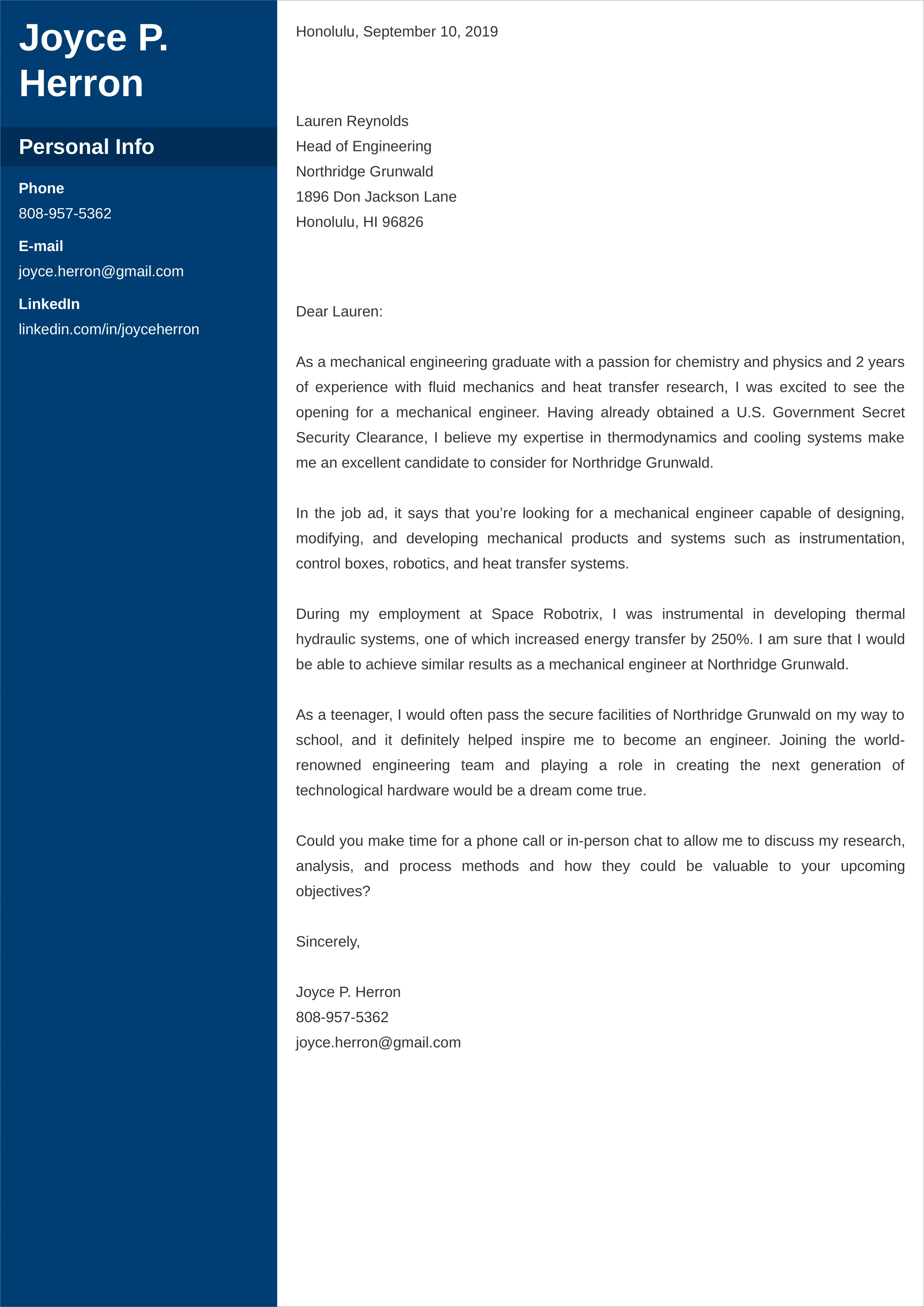
Begin with your contact information (name, address, phone number, and email) and the date, usually aligned to the left or right. This ensures the recruiter knows how to reach you. Include the recipient’s information as well, if available. Proper formatting and accuracy here set a professional tone from the start. This includes making sure the date format is appropriate and consistent with the employer’s location. Your contact information is extremely important; it is how the hiring team can contact you for an interview.
The Salutation
Address the hiring manager by name whenever possible. Research the company website or LinkedIn to find the correct person. If a specific name is unavailable, use a professional greeting like ‘Dear Hiring Manager.’ Avoid generic salutations such as ‘To Whom It May Concern’ as they lack personalization and show a lack of effort on your part. This personalization helps to build a connection and demonstrates that you have taken the time to research the company and the position. Tailoring your greetings adds that crucial touch of customization that can truly set your application apart from the rest.
Opening Paragraph Grab Attention
Start with a compelling hook. Mention the specific position you are applying for and where you found the job posting. Briefly state your enthusiasm and key qualifications. Avoid generic opening statements; instead, highlight something unique about yourself or your interest in the company. Your opening paragraph should grab the reader’s attention and make them want to read further. This first impression sets the stage for the rest of your letter, so make it count. You might mention a recent project or a specific achievement that aligns with the job requirements.
Highlighting Your Skills and Experience
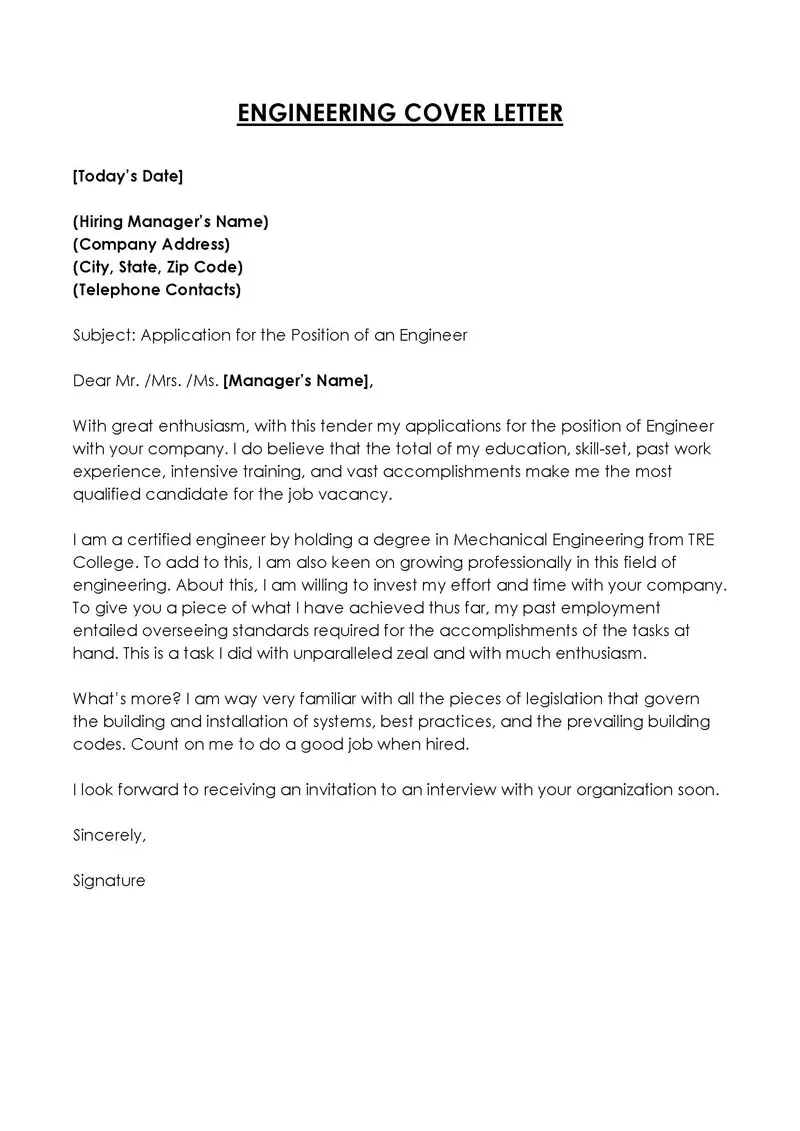
The body of your cover letter is where you demonstrate how your skills and experience align with the job requirements. Use specific examples to illustrate your accomplishments. This is where you connect the dots between your background and the needs of the role. Focus on quantifiable achievements rather than simply listing your responsibilities. This will give the hiring manager a clear picture of your capabilities. Highlighting your skills and experience effectively involves showcasing your accomplishments in a compelling way.
Quantify Your Achievements
Use numbers and data to demonstrate the impact of your work. For example, instead of saying ‘Managed projects,’ say ‘Managed projects resulting in a 15% reduction in project costs.’ Quantifiable achievements make your claims more credible and show tangible results. This could include project completion rates, cost savings, or efficiency improvements. These specific examples provide concrete evidence of your abilities and contributions, making your application more convincing. Quantification demonstrates that you have a results-oriented approach and can add value to the organization.
Focus on Relevant Projects
Select projects that directly relate to the job you are applying for. Briefly describe your role, the challenges you faced, and the outcomes achieved. Tailor these examples to match the keywords and requirements outlined in the job description. This shows the hiring manager that you understand the specific needs of the role and that your experience is directly applicable. Describing the technical components of your projects and highlighting the results will quickly show the employer what you have to offer. This strategic approach helps demonstrate how your skills and projects can benefit the company.
Showcase Technical Skills
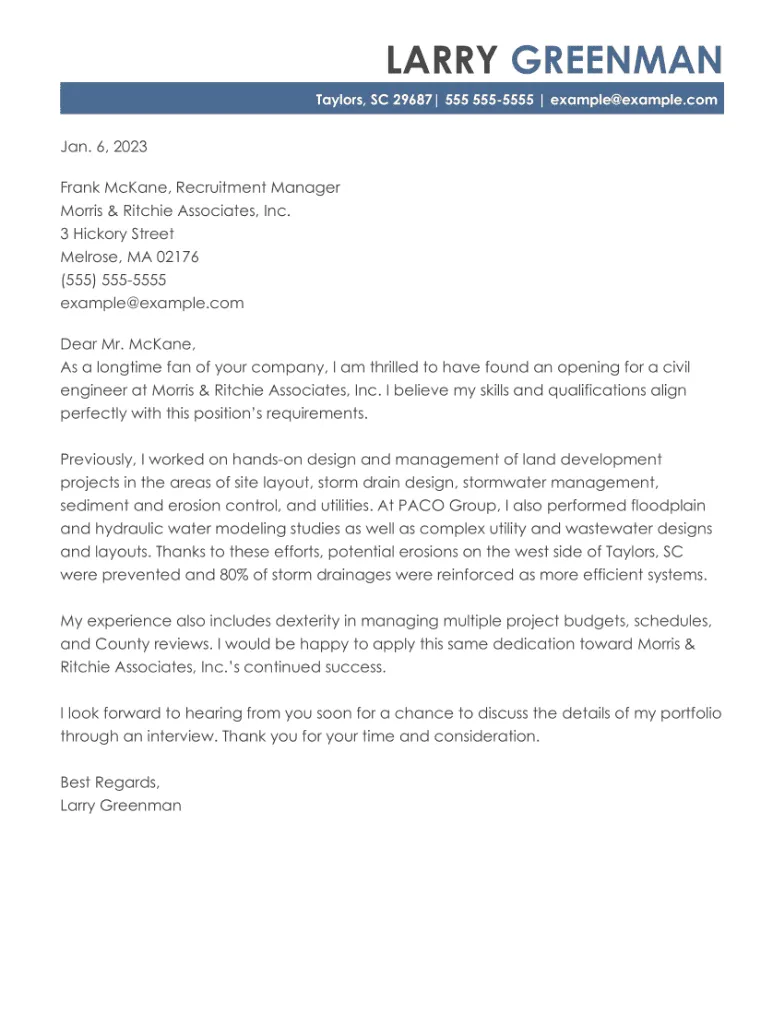
List the technical skills relevant to the job, such as programming languages, software proficiency, or specific engineering tools. Mention how you have used these skills in previous projects. Ensure that your list aligns with the skills mentioned in the job description. Highlighting your technical expertise is vital in the engineering field, so tailor your skills to match the specific requirements of the job. By providing concrete examples of how you have applied these skills in projects, you demonstrate your practical proficiency and understanding of engineering concepts. Showcasing a range of technical skills helps to make your application stand out.
Demonstrating Soft Skills
While technical skills are crucial, employers also value soft skills like teamwork, communication, and problem-solving. Provide examples of how you have demonstrated these skills in your previous roles. For instance, describe how you resolved a conflict within a team or successfully communicated complex technical information to a non-technical audience. Demonstrating these skills paints a picture of a well-rounded professional. Effective communication and teamwork can significantly enhance your professional appeal. Highlighting your ability to work collaboratively, communicate effectively, and solve problems is essential.
Expressing Enthusiasm and Interest
Express your genuine enthusiasm for the role and the company. Explain why you are interested in this specific position and what you hope to achieve. Research the company’s mission, values, and recent projects to demonstrate your interest. Referencing specific aspects of the company demonstrates that you have invested time to understand what they do. Articulating your enthusiasm for the position and company helps convey a genuine interest. Mention specific projects that appeal to you, or values that you identify with, to show that you are genuinely interested in the opportunity.
Tailoring Your Cover Letter
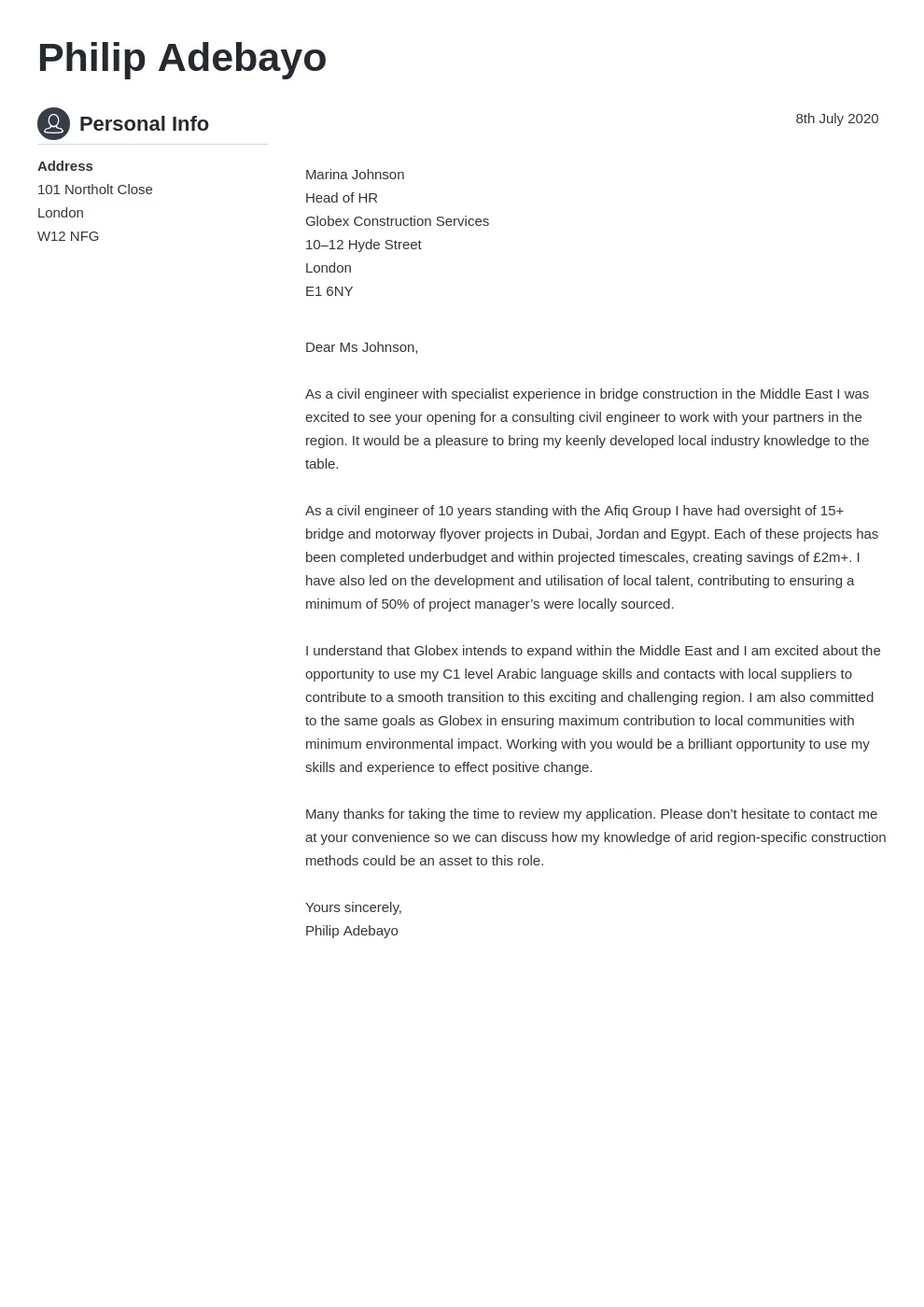
One of the most important aspects of writing a cover letter is tailoring it to each specific job. Generic cover letters are easily identified and often discarded. This is what shows a hiring manager that you care about their company and the specific role. Customize your letter to reflect the requirements outlined in the job description and the values of the company. Tailoring involves researching the company and understanding its needs to ensure your application resonates with the employer. Take the time to review each job description carefully and identify the key requirements.
Researching the Company and Role
Before you start writing, research the company’s mission, values, and recent projects. Visit their website, LinkedIn, and any relevant industry publications. Understand the specific requirements of the role and how your skills align with them. This information allows you to tailor your letter to demonstrate your understanding and interest. Use the job description as your guide and identify the key skills and experiences that the employer is looking for. The more you know about the company, the better you can align your qualifications and express your genuine interest.
Customizing Your Letter
Use the information you gathered to customize your letter. Mention specific projects, initiatives, or values that resonate with you. Adjust your language to match the tone and style of the company. Highlight the skills and experiences that are most relevant to the job description. Tailoring your application shows the hiring manager that you are truly interested in their company and the specific position. Customization demonstrates that you have taken the time to understand the role and the company. This attention to detail significantly improves your chances of being selected for an interview.
Proofreading and Editing
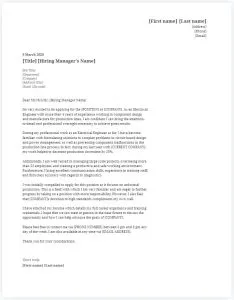
Proofreading is essential to ensure your cover letter is free of errors. Typos, grammatical errors, and inconsistencies can create a negative impression. Proofreading helps to ensure that your writing is clear, concise, and professional. Always read through your cover letter multiple times and consider asking a friend or mentor to review it. Taking the time to proofread thoroughly is an important investment in your application. Errors, no matter how small, can undermine your credibility and diminish your chances of success. This ensures your application is free of errors and conveys professionalism.
Common Mistakes to Avoid
Several common mistakes can undermine your cover letter and reduce your chances of getting hired. Avoiding these mistakes is crucial to creating a strong and effective cover letter. These errors can range from using a generic template to neglecting proofreading, each significantly impacting your ability to impress the hiring manager. Being mindful of these common pitfalls can greatly improve your chances of success in the application process. Understanding common mistakes is essential to ensure your cover letter stands out for the right reasons.
Using Generic Templates
Avoid using generic cover letter templates without customizing them. These templates often lack personalization and fail to highlight your unique skills and experiences. Customizing your letter shows that you have taken the time to understand the specific requirements of the job and the needs of the company. This personal touch is crucial for making a positive impression. These generic templates often fail to demonstrate your understanding of the role and the company. Personalization is essential for making your application memorable.
Focusing Solely on Responsibilities
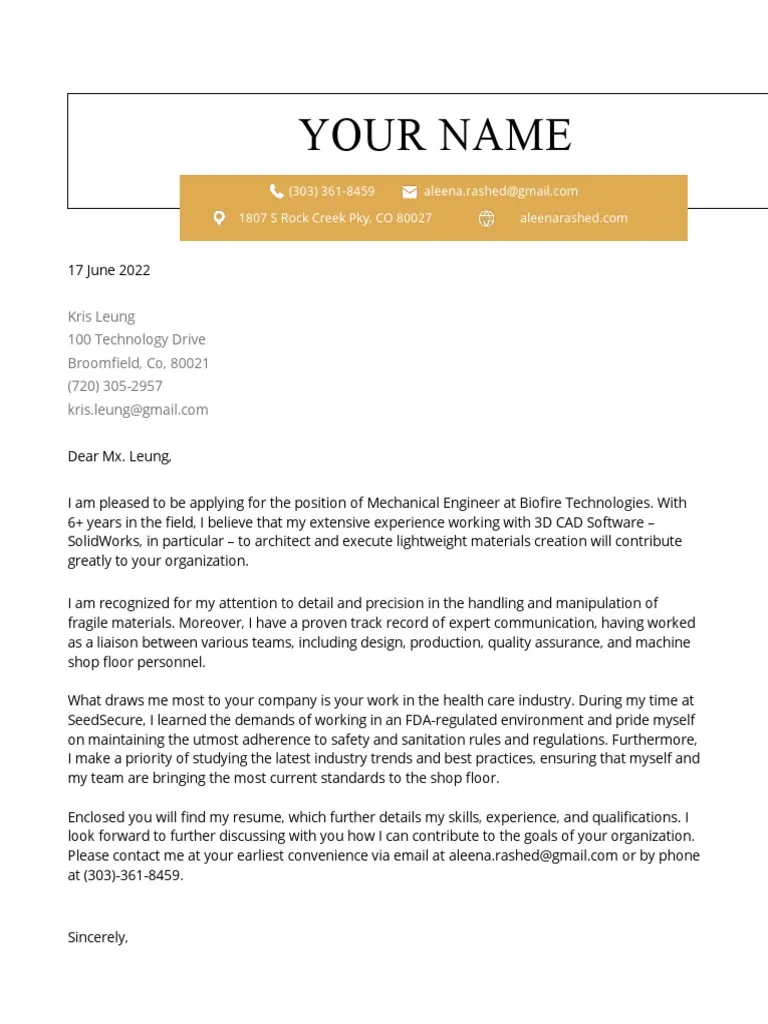
Do not just list your responsibilities; demonstrate your accomplishments. Focus on quantifiable achievements and the impact of your work. Use action verbs to describe your contributions and provide specific examples. This approach helps showcase your value to the employer. Simply listing responsibilities does not demonstrate your abilities or accomplishments. Instead, highlight your achievements using strong action verbs and provide concrete examples of the value you have brought to previous roles. Quantifying your achievements makes your claims more credible and provides a clear picture of your capabilities.
Neglecting Proofreading
Always proofread your cover letter carefully for any errors in grammar, spelling, and punctuation. Errors can create a negative impression and undermine your credibility. Asking a friend or mentor to review your letter is also a good idea. Ensure that your letter is free of errors, because these simple mistakes can create a negative impression and diminish your chances of success. Taking the time to proofread thoroughly is a crucial step in the application process. Multiple proofreading passes can catch errors you might miss.
The Closing
Your closing should reiterate your interest in the position and the company. Thank the hiring manager for their time and consideration. Use a professional closing statement, such as ‘Sincerely’ or ‘Best regards.’ Ending with a strong call to action helps to ensure that you do not miss any opportunities. A well-crafted closing paragraph can leave a lasting impression on the hiring manager. Avoid any closing that isn’t professional, and always make sure to thank the reader for their time. Your closing is another opportunity to make an impact and reinforce your interest.
The Call to Action
Include a call to action, such as expressing your availability for an interview. Make it easy for the hiring manager to take the next step. This can be as simple as stating that you are available for an interview at their earliest convenience. Providing a clear call to action prompts the reader to take the next step. A strong call to action reinforces your eagerness for the position and increases your chances of being considered. This increases the likelihood of receiving an interview invitation.
Sign-off and Contact Details
Use a professional sign-off, such as ‘Sincerely’ or ‘Best regards’, followed by your full name. Make sure your contact information is accurate and up-to-date. This is the final opportunity to leave a professional impression. Reiterate your contact information, including your phone number and email address, to ensure easy communication. A professional sign-off and accurate contact details provide a polished finish to your cover letter. Include all your contact information so that the hiring team can contact you easily.
